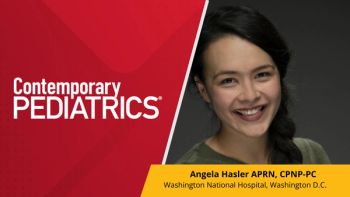Key takeaways:
- FDA granted 510(k) clearance for Ceribell’s Clarity algorithm for electrographic seizure detection.
- Ceribell System becomes the first and only AI-powered point-of-care EEG for all age groups.
- Clearance supported by EEG data from more than 700 patients.
On November 24, 2025, CeriBell Inc. announced that the FDA granted a 510(k) clearance for its Clarity algorithm to detect electrographic seizures in newborns, preterm and older, through adults, according to a press release from the medical technology company.1
Ceribell System Clarity algorithm for seizures in newborns
With the clearance, the Ceribell System is the first and only AI-powered point-of-care electroencephalography (EEG) technology available to detect electrographic seizures in all age groups of patients. The clearance was supported by EEG data from more than 700 patients, according to the company, which represented the "largest known validation dataset ever used for a neonatal seizure detection system."
"Ceribell's easy-to-use AI-powered point-of-care EEG helps address a critical gap in neonatal care by enabling prompt bedside neurological assessment and delivering real-time insights about each patient’s condition," said Janene Fuerch, MD, medical director of Neonatal ECMO, Stanford Children's Hospital, in a statement. "I have seen firsthand that many NICUs do not have 24/7 access to an EEG. There is a clear need for faster, more accessible tools to evaluate brain activity at the bedside – especially in those critical first hours of life.”1,2
According to Ceribell and research published in 2018 from Seminars in Fetal and Neonatal Medicine, research suggests that up to 90% of seizures among NICU patients go undetected without EGG monitoring.1,3
Continuous EEG monitoring guideline from the American Clinical Neurophysiology Society
In January 2025, the American Clinical Neurophysiology Society noted that continuous EGG (cEEG) monitoring is increasingly used in the management of neonates with seizures, though investigators noted that there "remains debate on what clinically relevant information can be gained from cEEG in neonates with suspected seizures, at high risk for seizures, or with definite seizures, as well as the use of cEEG for prognosis in a variety of conditions."4
In an updated guideline, a working group was formed from the American Clinical Neurophysiology Society membership with expertise in neonatal cEEG, which developed a set of priority questions. Using EMBASE and PubMed searches to identify relevant studies, the investigators extracted data and performed quality assessments. To evaluate the accuracy of cEEG for neonatal seizure diagnosis and the formulation of prognosis, the working group identified 6 priority questions. According to results, "the quality of evidence for most priority questions was rated as very low, and we provided conditional recommendations based on published literature and expert consensus."
With consideration for the benefits and harms of cEEG, with relative harms considered to be far less than the potential benefits across recommendations, the American Clinical Neurophysiology Society concluded, "Considering resource utilization and feasibility, when cEEG monitoring results have a likelihood of altering clinical decision making, the authors felt the resource investment was justifiable."
"Seizures are the most common neurological emergency in newborns, and protecting these fragile brains is essential to their long-term development and well-being,” said Jane Chao, PhD, co-founder and CEO of Ceribell. “This FDA clearance enables us to further expand availability of Ceribell’s rapid, AI-powered neurological monitoring technology and serve more patients in need. Every newborn deserves timely and accessible seizure detection, without the delays and transfers that too often put outcomes at risk.”1
References:
- Ceribell receives FDA 510(k) clearance for use of Clarity Algorithm for Neonates. Ceribell. Press release. November 24, 2025. Accessed November 24, 2025. https://investors.ceribell.com/news-releases/news-release-details/ceribell-receives-fda-510k-clearance-use-clarity-algorithm
- Janene Fuerch. Stanford Medicine CAP profiles. Accessed November 24, 2025. https://med.stanford.edu/profiles/janene-fuerch#:~:text=Janene%20H.,educator%2C%20researcher%20and%20physician%20entrepreneur.
- Massey SL, Jensen FE, Abend NS. Electroencephalographic monitoring for seizure identification and prognosis in term neonates. Semin Fetal Neonatal Med. 2018 Jun;23(3):168-174. doi: 10.1016/j.siny.2018.01.001. Epub 2018 Jan 17. PMID: 29352657.
- Wusthoff CJ, Numis AL, Pressler RM, et al. The American Clinical Neurophysiology Society Guideline on Indications for Continuous Electroencephalography Monitoring in Neonates. J Clin Neurophysiol. 2025 Jan 1;42(1):1-11. doi:10.1097/WNP.0000000000001120.









